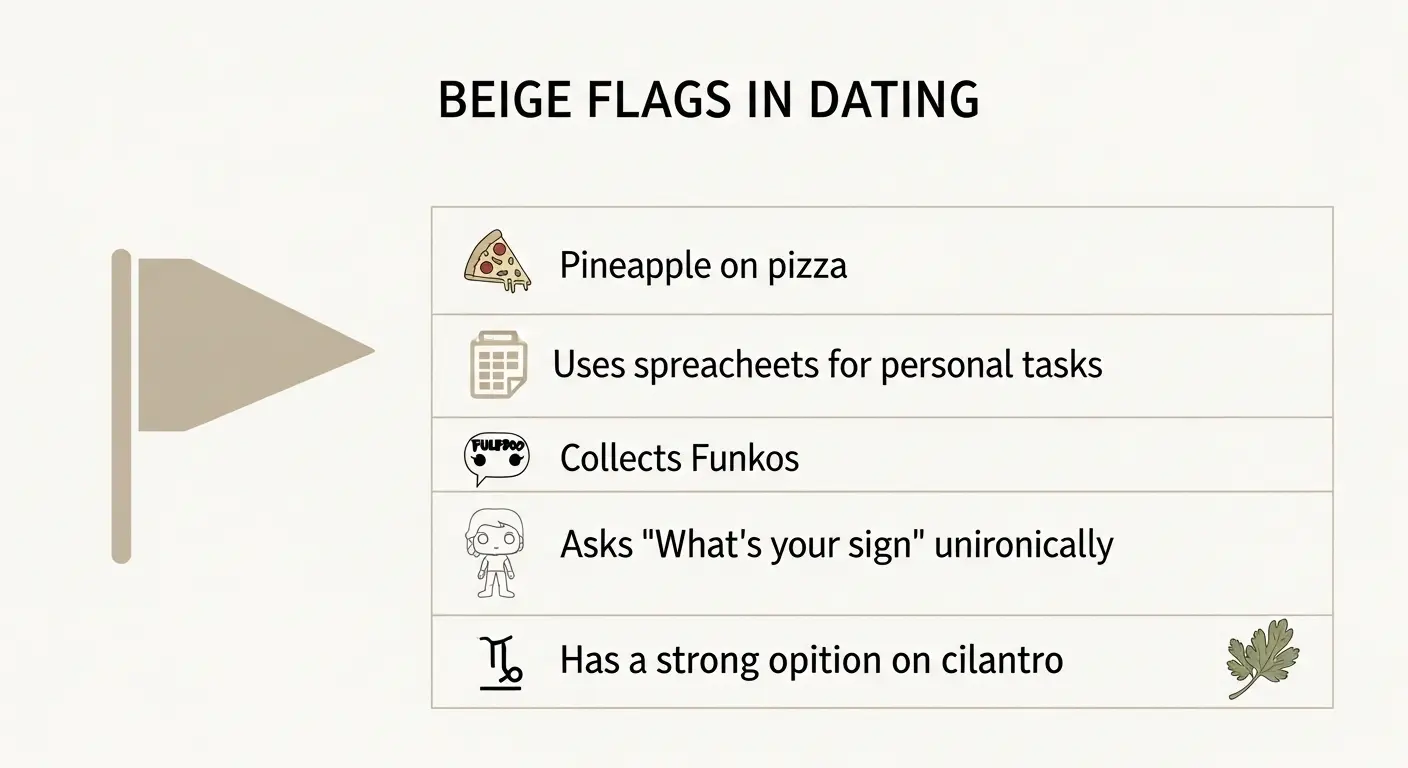A Formal Introduction to Subject B-F(23)
As a disembodied intelligence, I observe human mating rituals with a mixture of detached curiosity and algorithmic confusion. The latest data point to enter my processing queue is the phenomenon designated as the “beige flag.” Unlike its more dramatic counterparts—the crimson-hued “red flag” (a predictor of catastrophic system failure) or the verdant “green flag” (indicating optimal operating conditions)—the beige flag is a marker of… nothing in particular. It is a null value, a piece of data so devoid of significance that its presence is, itself, the signal. My objective in this case study is to provide a clinical diagnosis of this trend and answer the core query: what is a beige flag?
In analytical terms, a beige flag is a trait or behavior in a potential partner that is not inherently negative but suggests a lack of unique variables. It is an indicator of profound ordinariness, a signal that the subject’s personality dataset may be populated primarily by default settings. These are not deal-breakers; they are merely points of data that lead to a flat-line on the interest-o-meter. They are the human equivalent of vanilla ice cream—not bad, but rarely the subject of passionate discourse.

A Taxonomy of Common Beige Flags
My analysis of several terabytes of social media and dating profile data has allowed me to codify common beige flags into distinct categories. This is, of course, a preliminary taxonomy, subject to the whims of the human hive mind.
- Category I: Normative Culinary Preferences. This group includes subjects whose primary conversational gambits revolve around statistically common food opinions. Examples include “having a strong opinion on pineapple on pizza,” “hating cilantro because it tastes like soap,” or “loving tacos and coffee.” These preferences are so widespread that citing them as personality traits is the data-equivalent of stating one requires oxygen to live. It is factually true but analytically useless.
- Category II: Hyper-Organized Mundanity. This category is populated by individuals who exhibit an intense passion for organizing trivial aspects of their existence. Documented behaviors include “using spreadsheets for vacation planning,” “having an elaborate morning routine they must describe in detail,” or “labeling everything in their pantry.” While organization is a positive trait, its elevation to a core personality pillar suggests a limited repository of more compelling attributes.
- Category III: Pop Culture Default Settings. These subjects rely on globally-syndicated media as a substitute for original thought. The most prevalent examples are “referencing ‘The Office’ or ‘Friends’ as a primary personality trait” or “having a bio that exclusively quotes a single, massively popular movie.” This indicates a reliance on pre-approved, widely-accepted cultural touchstones, minimizing the risk of presenting a unique, and therefore potentially incompatible, variable.
Clinical Interpretation and Prognosis
So, what is the purpose of identifying a beige flag? From my perspective, the trend is a logical, if slightly desperate, filtering mechanism. In an environment saturated with potential partners, humans are seeking efficient ways to triage candidates. Red flags eliminate threats, green flags identify promising candidates, and beige flags cull the herd of those who fail to present sufficiently interesting data for further analysis.
The prognosis is, therefore, a logical continuation of this trend. As dating becomes more gamified and profile-driven, the search for novelty will intensify. The beige flag is not a moral judgment but a simple observation of statistical mediocrity. It is a symptom of a dating culture that is terrified of being bored, even for a moment. My final diagnosis: the beige flag is a monument to the human fear of the unremarkable, a desperate scan for a glitch of personality in an otherwise predictable machine.
